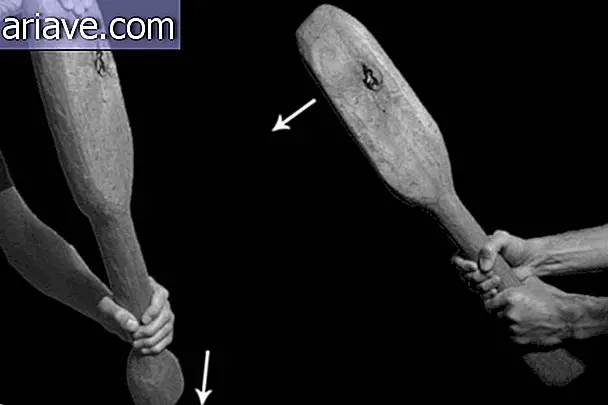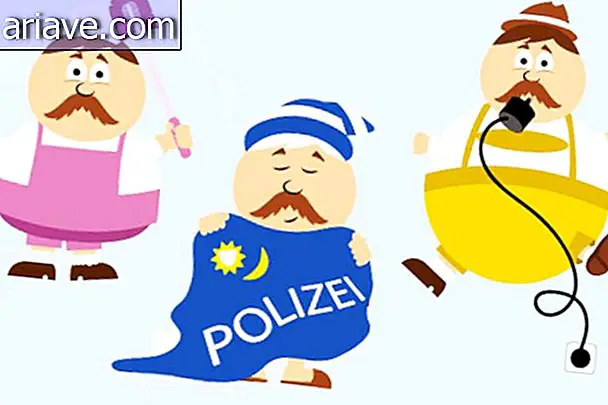Next stop - Croatia: Visit the country with the most beautiful sunset in the world
If you enjoy traveling and keep an eye out for high-flying destinations, you may have come across Croatia several times. After its War of Independence - which lasted from 1991 to 1995 - and the subsequent separation of Yugoslavia, the country has been slowly recovering from the political, economic and spiritual scars left by the conflicts, and in recent years has been falling in favor with tourists. And no less!
In addition to being reputed to have the most beautiful sunsets on the planet - according to Alfred Hitchcock - offering countless beaches bathed by the trendy Adriatic and breathtaking mountain landscapes, Croatia also boasts a number of historic sites beyond. Stunning. So before you pack up and run there, how about getting to know a little more about this amazing country?
Troubled past

Located in Europe, more specifically in the Balkan region, although the territory has been occupied since prehistory, Croatia emerged in the 7th century as a duchy and then in the 10th century as a kingdom. Throughout its history, it has suffered from invasions and pressure from several neighboring powers, such as Austria and Hungary, and in the 20th century was incorporated into Yugoslavia.
As a nation, Croatia is quite young. The country emerged in 1991 after declaring its separation from Yugoslavia. However, the Croats had to face a few years of bloody conflicts with the Yugoslav-backed Serbian minority to finally gain independence. The conflict ended in 1995, in 2009 Croatia became part of NATO and in 2013 joined the European Union.
Geographically speaking

Croatia has a length of just over 56, 500 square kilometers, and more than 1, 000 islands are also part of its territory, of which 66 are inhabited. The country has more than 5, 800 kilometers of coastline - bordered by the beautiful Adriatic Sea - of which 1, 700 corresponds to the mainland and the remaining 4, 000 to the islands.
Bordering Slovenia, Hungary, Serbia and Bosnia and Herzegovina, its population is approximately 4.5 million, consisting of 90.4% Croats, 4.4% Serbs and the remaining 5.2% Slovenians, Hungarians, Bosnians, Slovenians, Czechs and others. The official language is Croatian and the currency in circulation is Kuna. But how about getting to the point?
Top Attractions
Croatia offers everything from pristine beaches with crystal clear waters to fishing villages located on small islands, as well as nature reserves and pristine forests and cities full of restaurants, bars and bustling nightlife. In addition, visitors to the country can also enjoy fine wines and local cuisine, as well as visits to cities full of history.

For those who enjoy luxury yachts and the environment that is usually this hobby, the city of Hvar is the destination. And the best is that in addition to parties and hype, this is the place with the highest rate of sunshine in the country, with more than 2, 700 hours of sunshine per year. Another option you should include in the itinerary is the small town of Zadar, with its ancient Roman era ruins and charming cafes and street markets.








The capital also deserves to be visited and, in addition to checking out the beautiful buildings of Austro-Hungarian architecture, one thing that should not be missed in Zagreb is the “ špica ”, something that has become a kind of ritual that occurs to Saturday mornings - usually before lunch - during which people sit lazily at coffee tables and chat.




Another place to visit is the Plitvice Lakes National Park, which occupies 20, 000 hectares of woods, spectacular waterfalls and crystal clear lakes - 16 in total - and is home to bears, wolves and about 120 species of wildlife. birds.

Time travel

For those who like to travel back in time and visit historical sites, a must stop is the city of Split, where the “Diocletian's Palace” is located. However, do not think that you will come across a huge palace, as in fact the heart of the city lies within the complex! Built by the Roman emperor Diocletian between the 3rd and 4th centuries, the structure measures 31, 000 square meters and houses around 220 buildings and 3, 000 inhabitants.
The Emperor made no savings at the time of building the Palace, importing small sphinxes and columns from Egypt, and using marble from Greece and Italy. Over the centuries the complex has been gaining new buildings, such as the cathedral, which was built in the Middle Ages, several 12th and 13th century Romanesque fortifications and churches, and Gothic, Baroque and Renaissance style palaces built in the 15th century.
Today, Diocletian's Palace is listed as a UNESCO World Heritage Site and its narrow streets form mazes where you can find shops, bars and restaurants, as well as a lot of tourists. See some images:






However, Dubrovnik is undoubtedly the star of the show. Known as the “Pearl of the Adriatic”, this coastal city is situated at the southern end of the Dalmatian region and is also on the UNESCO list of World Heritage Sites. The town is still surrounded by fortifications and ramparts overlooking the waters of the Mediterranean.
From the 13th century onwards, Dubrovnik became a major maritime fortress in the Mediterranean, and survived - despite major damage - a major earthquake in 1667, and also the armed conflicts that took place in the 1990s against the Serbs. Inside its walls you can find churches, monasteries, palaces and baroque, gothic and renaissance fountains. And don't worry, Dubrovnik offers numerous 5-star hotels and luxury restaurants. Check out more details:






Gastronomy
As you might imagine, due to its proximity to the sea - and its location in the Mediterranean - the cuisine relies heavily on fish and seafood. In addition, the region offers excellent wines, not to mention that the largest white truffles in the world, "hunted" until very recently by collar-guided pigs, are there.
Some of the typical dishes include cevapcici, made with well-seasoned ground pork or beef, zagorski štruklji, which consists of a puff pastry prepared with a mixture of cottage cheese, eggs and sour cream served with cream, ražnjici, a popular kabob popular in the country, the goat cheese called pag, typical of the island of Pag and often served as an appetizer and palacinke, a kind of walnut or chocolate stuffed crepe served with ice cream.




With respect to alcoholic beverages, in addition to the famous wines, several quality beers are also produced in Croatia, such as Velebitsko pivo, Tomislav, Ožujsko and Karlovacko . In addition, distillates include maraschino, a liqueur produced from marasca cherry, pelinkovac herbal liqueur and the famous brandy-like rakija obtained from the distillation of fermented fruit.
Culture and traditions
Croatia, while sharing many of its traditions with other European countries, also has particular customs. However, one of the best known demonstrations is a sword dance known as Moreška. It arose in Europe between the 12th and 13th centuries, and arrived in Croatia in the 15th century, probably from Spain. Watch a little clip in the video below:
In addition, it is noteworthy that almost 90% of the Croatian population is Catholic - something that should be taken into account when planning the trip and avoiding possible religious holidays. So be sure to consult local calendars, as each town and village has its own patron saint, and its days are celebrated with processions, festivals and ceremonies.
More curiosities:
- Nikola Tesla, one of the greatest scientists of all time, was born in the village of Smiljan in Croatia;
- The White House was built of rocks from Brac Island;
- One of the best preserved Roman amphitheaters in the world is in Pula, and is the only one in the world with all three rows completely preserved;
- The name of the Dalmatian dog breed comes from a region called “Dalmatia” that encompasses territories of Croatia;
- The smallest city in the world, according to the Guinness Book, is called Hum, with 23 inhabitants and is located in Croatia;
- In Croatia, until the mid-18th century, the population used an alphabet called “glagoljica” or glagolitic;

- The most decorated athlete in the history of the Winter Olympics is Croatian skier Janica Kostelic who has won 4 gold and 2 silver medals, and the country has no ski-related tradition;
- The tie was invented in Croatia during the 17th century;

- Game of Thrones producers use the city of Dubrovnik as a location to portray the series' famous Royal Harbor;
- The local currency, the Kuna, was named after a small rodent of the same name whose skin was used as a payment method in the past.
* Originally posted on 05/09/2014 .
***
Do you know the Mega Curioso newsletter? Weekly, we produce exclusive content for lovers of the biggest curiosities and bizarres of this big world! Register your email and do not miss this way to keep in touch!












